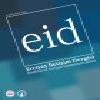TÜRK ÜNİVERSİTELERİN PAYDAŞ ANALİZİ
üniversiteler, stratejik planlama, paydaş teorisi, Paydaşlar
STAKEHOLDER ANALYSIS OF TURKISH UNIVERSITIES
universities, strategic planning, stakeholder theory, Stakeholder,
___
- Akdeniz Üniversitesi. (2012). 2013 - 2017 Akdeniz Üniversitesi Stratejik Planı. Erişim Tarihi: 25.09.2017, http://proje.akdeniz.edu.tr/otomasyon/web/strateji/plan/1978.pdf
- Aktan, C.C. ve Börü, D. (2007). Kurumsal sosyal sorumluluk. Coşkun Can Aktan (Edt.). Kurumsal Sosyal Sorumluluk, İşletmeler ve Sosyal Sorumluluk (11-36). İstanbul: İgiad Yayınları.
- Atılım Üniversitesi. (2014). Stratejik Plan (2015-2019). Erişim Tarihi: 25.09.2017, http://m.atilim.edu.tr/shares/atilim/files/2015-2019_Stratejik_Plan.pdf
- Avcı, Ö., Ring, E. ve Mitchelli, L. (2015). Stakeholders in U.S. Higher Education: An Analysis Through Two Theories of Stakeholders. Bilgi Ekonomisi ve Yönetimi Dergisi, Cilt: X Sayı: II, 45-54.
- Bayraktar, B. B. ve Yıldız, A. K. (2007). Kurumsal Bilginin Stratejik Planlama Sürecinde Kullanılması: Bir İlçe Belediyesi Örneği. Bilgi Dünyası, 8(2): 280-296.
- Berelson, B. (1952). Content Analysis in Communication Research. Glencoe: Free Press.
- Birnbaum, R. (1988). How Colleges Work: The Cybernetics of Academic Organization and Leadership. USA: Jossey-Bass Inc.
- Boğaziçi Üniversitesi. (2014). Stratejik Amaçlar, Stratejik Hedefler, Performans Ölçütleri, Faaliyetler ve Sorumlular - 2015-2019. Erişim Tarihi: 25.09.2017, http://www.boun. edu.tr/Assets/Documents/Dosyalar/Bu_SP_2015_2019.pdf
- Burrows, J. (1999). Going Beyond Labels: A Framework for Profiling Institutional Stakeholders. Contemporary Education, 70, 4, 5-10.
- Chapleo, C. ve Simms, C. (2010). Stakeholder analysis in higher education: A case study of the University of Portsmouth. Perspectives: Policy and Practice in Higher Education, 14 (1), 12-20.
- Clarkson, M.B.E. (1995). A Stakeholder Framework for Analizing and Evaluating Corporate Social Performance. Academy of Management Review, 20(1), 92-117.
- Deren Van Het Hof, S. ve Hoştut, S. (2015). Sosyal Sorumluluk Kampanyası için Stratejik Adımlar. Kurumsal Sosyal Sorumluluk: Kavramlar, Uygulama ve Örnekler (81- 128). Ankara: Nobel Yayın Dağıtım.
- Dobni, C. ve Luffman, G. (2003). Determining the Scope and Impact of Market Orientation Profiles on Strategy Implementation and Performance. Strategic Management Journal, 24(6), 577-585.
- Erciyes Üniversitesi. (2016). ERÜ 2017-2021 Stratejik Planı. Erişim Tarihi: 25.09.2017, http://stratejikplan.erciyes.edu.tr/2017-2021/
- Ertuğrul, F. (2008). Paydaş Teorisi ve işletmelerin Paydaşları ile İlişkilerinin Yönetimi. Erciyes Üniversitesi İktisadi ve İdari Bilimler Fakültesi Dergisi, 31, Temmuz- Aralık 2008, 199-223.
- Freeman, E.R. (1984). Strategic Management a Stakeholder Approach. Cambridge: Cambridge University Press. Friedman, M. (1970). The Social Responsibility of Business is to Increase its Profits. New York Times Magazine, 13 September.
- Gebze Teknik Üniversitesi. (2016). Gebze Teknik Üniversitesi 2017-2021 Stratejik Planı. Erişim Tarihi: 25.09.2017, http://www.gtu.edu.tr/Files/Idari_Birimler/06_Strateji_ Gelistirme_Daire_Baskanligi/01_Stratejik_Plan/GTU_2017-2021_Stratejik_Plan.pdf
- Grunig, J. ve Repper, F.C. (2005). Stratejik Yönetim. Kamular ve Gündemler. Der: James E. Grunig vd. Halkla İlişkiler ve İletişim Yönetiminde Mükemmellik (131-172). İstanbul: Rota Yayın Dağıtım Tanıtım.
- Grunig, J.E. ve Hunt, T. (1984). Managing Public Relations. USA: Wadsworth/Thomson Learning.
- Hacettepe Üniversitesi. (2017). Hacettepe Üniversitesi Stratejik Planı 2018-2022. Erişim Tarihi: 25.09.2017, http://www.sgdb.hacettepe.edu.tr/sayfa_dosyalari/raporlar/stratejik_ plan/2018-2022_HU_SP.pdf
- Bilkent Üniversitesi. (2017). Stratejik Plan Taslağı. Erişim Tarihi: 21.09.2017, http://w3.bilkent. edu.tr/www/stratejik-plan-taslagi/
- Times Higher Education. (2017). World University Rankings 2018 World Ranking Page. Erişim Tarihi: 15.09.2017, https://www.timeshighereducation.com
- İstanbul Teknik Üniversitesi. (2016). 2017-2021 Stratejik Plan. Erişim Tarihi: 25.09.2017, http://www.sp.gov.tr/upload/xSPStratejikPlan/files/WaDGC+ITU_ STARATEJIKPLAN_2017_2021.pdf
- İstanbul Üniversitesi. (2013). İstanbul Üniversitesi 2014-2018 Stratejik Planı. Erişim Tarihi: 25.09.2017, http://cdn.istanbul.edu.tr/statics/strateji.istanbul.edu.tr/wp-content/ uploads/2014/05/IU_2014_2015_StratejikPlan.pdf
- İzmir Teknoloji Enstitüsü. (2013). İzmir Yüksek Teknoloji Enstitüsü Stratejik Planı 2014- 2018. Erişim Tarihi: 25.09.2017, http://web.iyte.edu.tr/strateji/dosya/Stratejik_ Plan_2014-2018.pdf
- Jones T.M. (1980). Corporate Social Responsibility Revisited, Redefined. California Management Review, Vol. 22, No. 3, Spring, 59-67; DOI: 10.2307/41164877
- Johnson, G., Scholes, K. ve Whittington, R. (2008). Exploring Corporate Strategy. England: Prentice Hall.
- Jongbloed, B., Enders, J. ve Salerno, C. (2008). Higher Education and its Communities: Interconnections and Interdependencies and a research agenda. Higher Education, September 2008, Volume 56, Issue 3, 303–324.
- Kettunen, J. (2015). Stakeholder Relationships in Higher Education. Tertiary Education and Management, Vol. 21, No. 1, 56–65; DOI: 10.1080/13583883.2014.997277
- Kettunen, J. (2014). The Stakeholder Map in Higher Education. Erişim Tarihi: 10.10.2017, http://www.ipedr.com/vol78/007-ICSEP2014-S00020.pdf; DOI: 10.7763/IPEDR. 2014. V 78
- Mainardes, E.W., Alves, H. ve Raposo, M. (2010). An Exploratory Research on the Stakeholders of a University. Journal of Management and Strategy, Vol. 1, No. 1; December 2010, 76-88; doi:10.5430/jms.v1n1p76
- Marmara Üniversitesi. (2016). 2017-2021 Stratejik Planı. Erişim Tarihi: 25.09.2017, https:// www.marmara.edu.tr/universite/genel/stratejik-plan/
- Mintzberg, H. ve Rose, J. (2003). Strategic Management Upside Down: Tracking Strategies at McGill University from 1829 to 1980. Canadian Journal of Administrative Sciences, 20(4), 270-290.
- Mitchell, R., K., Agle, B.R. ve Wood, D.J. (1997). Toward a Theory of Identification and Salience: Defining the Principle of Who and What Really Counts. Academy of Management Review, 22(4), 853-886.
- Musial, K. (2010). Redefining External Stakeholders in Nordic Higher Education. Tertiary Education and Management, March 2010, 45-60, DOI: 10.1080/13583881003629822
- Orta Doğu Teknik Üniversitesi. (2017). 2018-2022 Stratejik Planı. Erişim Tarihi, 25.09.2017, http://sp.metu.edu.tr/system/files/odtu_sp_2018_2022_06102017.pdf
- Sarıkaya, M. (2011). Paydaş Yaklaşımı Bağlamında İşletme-Paydaş Etkileşimi ve Stratejik Paydaş Analizi. Ankara Sanayi Odası Yayın Organı; Eylül/Ekim 2011. Erişim Tarihi: 06.10.2017, http://www.Aso.Org.Tr/B2b/Asobilgi/Sayilar/Dosyaeylulekim2011.Pdf
- Schmeer, K. (1999). Stakeholder Analysis Guidelines. Erişim Tarihi, 16.12.2017, http://www. who.int/workforcealliance/knowledge/toolkit/33.pdf
- Stone P.J., Dunphy, D.C., Marshall, S.S ve Ogilvie, D.M. (1966). The General Inquirer: A Computer Approach to Content Analysis. Massachusetts: The MIT. Press.
- Tam, F. (2007). Rethinking School and Community Relations in Hong Kong. The International Journal of Educational Management, 21(4), 350-366.
- Varvasovszky, Z. ve Brugha, R. (2000). How to Do (or not to do) a Stakeholder Analysis. Health Policy and Planning, 15, 338-345.
- Wallner und Schauer GmbH. (2006). Methodensammlung – In 7 Schritten zum Nachhaltigkeitsbericht. Erişim Tarihi, 13.03.2014, https://www.wko.at/Content. Node/Service/Umwelt-und-Energie/Nachhaltigkeit- und- Umweltmanagement/ Nachhaltigkeit/Nachhaltigkeit/In_7_Schritten_zum_Nachhalti gkeitsbericht.html
- Yıldız Teknik Üniversitesi. (2015). 2016-2020 Stratejik Planı. Erişim Tarihi: 25.09.2017, http://www.kalite.yildiz.edu.tr/login/sys/admin/subPages/img/YD- 001- YT%C3%9C%202016-2020%20Stratejik%20Plan.pdf
- ISSN: 1308-3198
- Yayın Aralığı: 2
- Başlangıç: 2009
- Yayıncı: Erciyes Üniversitesi İletişim Fakültesi
OSMANLI BASININDA SA’Y U AMEL TARTIŞMALARI
DÖNÜŞEN MEDYA ÇAĞINDA SİYASAL KATILIM: İSTANBUL’DA YAŞAYAN 18-22 YAŞ SEÇMEN ÖRNEĞİ
İTİBAR OLUŞUMUNDA MEDYADA GÖRÜNÜRLÜK: BANKALAR ÜZERİNE BİR ARAŞTIRMA
Sevil BAYÇU UZOĞLU, Emine ŞARDAĞI
SAĞLIK İLETİŞİMİNDE SEKTÖREL TESPİTLER
GÖZ TAKİBİ DENEYİMİYLE GAZETEDE RENK FAKTÖRÜ
Esra SERTEL, Hakan YILDIRIM, Serel Özmen AKYOL
Kadir YILDIZ, Yavuz YILDIZ, Cengiz ATEŞ
SOSYAL MEDYA BAĞIMLILIĞININ HABER TAKİBİ MOTİVASYONLARI ÜZERİNE ETKİSİ
